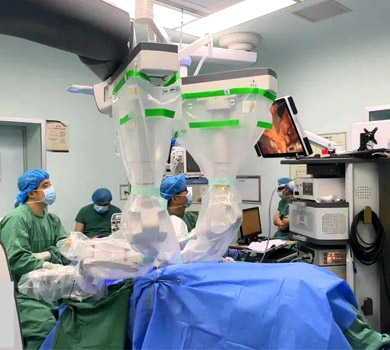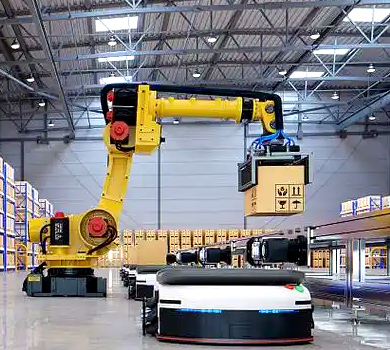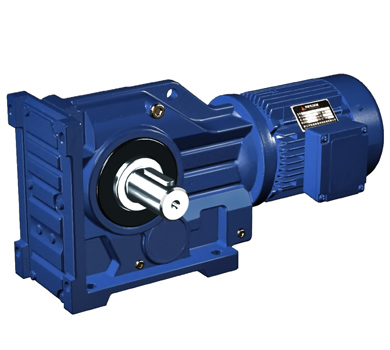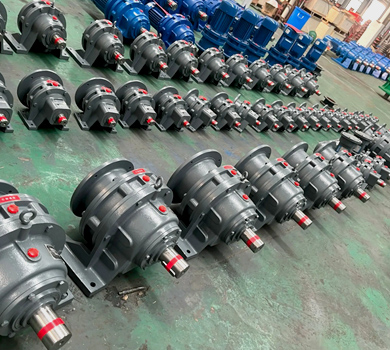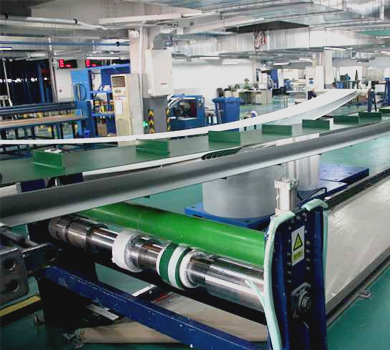I. Industry Pain Points Analysis of Medical Robotics
1. Insufficient surgical operation precision: Traditional transmission components cause positioning deviations, affecting the accuracy of minimally invasive surgery
2. Weak structural rigidity: Deformation under high-frequency, high-load operations threatens surgical safety
3. Transmission error accumulation: Error stacking over long-term operation reduces equipment stability and repeatability
4. Poor spatial adaptability: Compact medical devices impose strict requirements on gearbox size
5. Lack of high-temperature resistance: Unable to meet sterilization and special medical environment requirements
6. Limited installation flexibility: Standardized components struggle to adapt to diverse device structures
II. Core Requirements List for Medical Robotics
- Sub-millimeter positioning accuracy to meet precision surgery needs (e.g., neurosurgery)
- High-rigidity structural design to withstand high-load operations in orthopedic robots
- Low transmission error over full lifecycle to ensure long-term reliability
- Miniaturized size solutions to fit compact spaces like endoscopic robots
- High-temperature resistance to support 121°C sterilization
- Flexible installation options to adapt to complex device layouts
III. Current Status of Medical Robotics Transmission Systems
With the expansion of medical robotics in precision surgery and rehabilitation care, traditional gearboxes increasingly show performance limitations in multiple dimensions including precision, rigidity, and size. The industry urgently needs core components combining high-precision transmission, high-load capacity, and customized adaptability to break through equipment performance bottlenecks and meet stringent clinical requirements.
IV. Waimica Customized Solution Step-by-Step Analysis
1. High-Precision Implementation Path
Through 3D tooth profile optimization and nanometer-level precision grinding technology, gear meshing error is controlled within ±15 arcseconds. For neurosurgical robots, customized gearboxes with multi-axis motion control achieve 0.08mm end-effector positioning accuracy, a 60% improvement over traditional solutions.
2. High-Rigidity Reinforcement Scheme
Using high-strength low-carbon alloy steel (carburizing quenching hardness HRC58-62) and integral cycloid wheel structure, stress distribution is optimized via FEA analysis. Output shaft rigidity is 35% higher than conventional products. In femoral condyle grinding operations of orthopedic robots, it can withstand 2000N·m continuous torque without deformation during high-speed cutting.
3. Low-Error Control Technology
Dual-stage reduction structure with flexible bearing pre-tensioning technology reduces backlash to less than 5 arcminutes, with full-lifecycle transmission error <0.1%. Applied to radiation therapy positioning robots, position repeatability remains ±0.05mm after 100,000 consecutive operations.
4. Miniaturization Design Strategy
Integrated flange design and lightweight material application reduce smallest gearbox diameter to 55mm (50N·m output torque), suitable for 10mm-diameter endoscopic robotic arms. Space occupancy is 40% less than traditional solutions.
5. High-Temperature Performance Optimization
High-temperature stable lubricant (-40°C~150°C) and thermal barrier coating technology enable 30-minute continuous operation at 135°C, fully meeting medical-grade high-pressure steam sterilization (121°C/20 minutes) requirements.
6. Customizable Installation Methods
Provides 15 standard mounting interfaces (flange type/through-shaft type/hollow-shaft type/dual-support type) and supports custom special mounting structures. For example, lightweight flange interfaces developed for rehabilitation exoskeleton robots achieve zero-gap connection between gearboxes and joint components, improving installation efficiency by 50%.
V. Key Performance Parameters and Application Examples
| Parameter Category | Technical Specifications | Typical Application Scenarios |
|---|---|---|
| Reduction Ratio | 3:1~160:1 (custom non-standard ratios available) | Laparoscopic surgery robot (40:1 ratio for precise wrist movement) |
| Output Torque | 5N·m~8000N·m | Orthopedic surgery robot (5000N·m torque output for bone reaming operations) |
| Dimensions | 55mm~320mm diameter, 70mm~280mm length | Vascular intervention robot (65mm diameter model for narrow catheter sheath space) |
| Material | Cycloid wheel: GCr15 bearing steel (HRC60±2 hardness) Pinion housing: QT700-2 nodular cast iron | Corrosion-resistant environments (e.g., medical hydrogen peroxide disinfection scenarios) |
| Operating Temperature | -30°C~150°C (short-term peak 180°C) | High-temperature sterilization equipment (121°C high-pressure steam sterilization cycles) |
| Protection Rating | IP68 (optional IP69K high-pressure wash resistance) | Humid operating room environments and post-surgery rapid cleaning scenarios |
VI. Waimica Customization Service Core Advantages
As a professional RV cycloidal gear reducer manufacturer, we provide:
✅ Cost-effective solutions: 20%-30% lower cost for equivalent performance
✅ Fast delivery: 4-week lead time for standard custom solutions, 72-hour urgent processing available
✅ Quality assurance: IATF16949 certified, 21-step quality inspection process
✅ Technical support: Senior engineer team provides full-cycle service from design to on-site commissioning
✅ Flexible manufacturing: Supports small-batch trial production (minimum order 50 units) and mass production
Waimica consistently client-centric, delivering reliable and efficient transmission solutions through continuous technological innovation and process optimization. Contact us now to make customized RV reducers the core power for your equipment upgrades.


